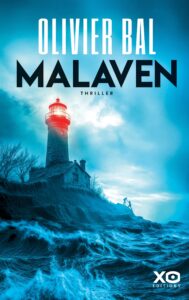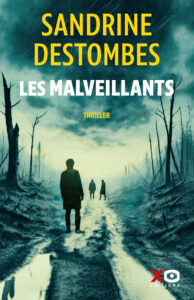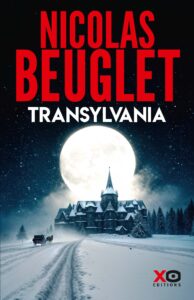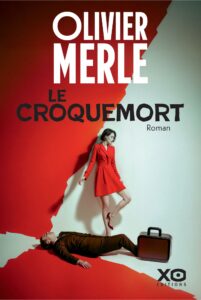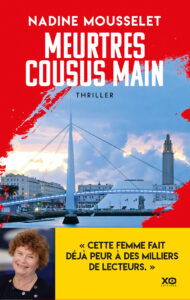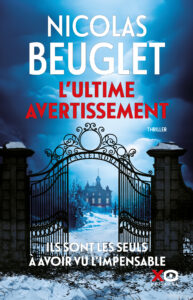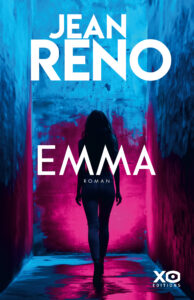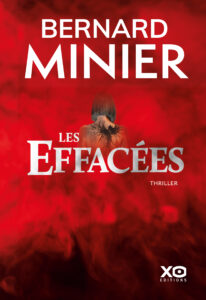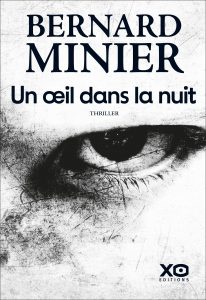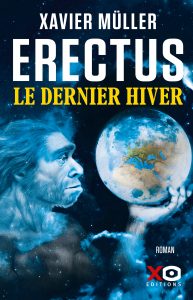Bloody Stones
BEHIND THE SCENES OF ORGANIZED CRIME
Corsica, 1993. After having fled his island, Ange Biasini is forced to return home. His younger brother Theo needs his skills as a former professional freediver to mount a series of unusual robberies involving the yachts of three billionaires. In the process, they will be confronted with something they should never have seen.
London, 2019. In an apartment overlooking the Thames, the police have just found a strangled man – a Serbian billionaire. Marie Jansen, an agent for Europol, who had been investigating him, is captivated by a message written in Italian in blood: Che la mia ferita sia mortale.
Marie, who grew up in Corsica knows what these words mean: “May my wounds be mortal.” Thus begins a terrifying investigation that will bring her to the “scarred one”, the Godfather, in his lair.
A breathless hunt & quest for redemption in the heart of Europe
What if the victims were actually the culprits ?
Author's interview
A new thriller and a new heroine, the investigator Marie Jansen, whose personal history overlaps with the case she’s working on. Who is she?
Marie Jansen is a thirty-year-old woman who works for Europol, the European criminal police. Together with her team, she’s investigating Miroslav Horvat, a Serbian magnate suspected of extorsion and corruption. One year after the investigation began, they are prepared to arrest him. But at the start of the novel, Horvat is found dead on the balcony of his London apartment, stabbed and strangled. By his side, inscribed in blood, are the words Chè la mia ferita sia murtale. Marie, raised in Corsica till the age of 18, is the only one who understands the language, these words, and their meaning: May my wound be mortal. This is when Marie’s trek across Europe begins. The trail she follows to catch an uncatchable murderer— leads her back to her native island.
And yet she’s not a field investigator…
No, her role at Europol is to organize cooperation among the various local police departments. She’s a complex character, acting more as an observer, keeping her distance. But due to the unusual circumstances, this time she’s going to have to get her hands dirty and brave the danger, as much as she would prefer not to. This against the backdrop of Marie’s perceived perfect life— a little cocoon that protects her. She has a husband who loves her, a little girl, Romy, and a beautiful home in The Hague, where she works in one of the highest security offices in the world. She’s done everything she can to build a wall between her past and the present. But now she will be forced to confront her demons, and the terrible wound she hides.
Let’s move on to your characters Angel and Theo, brothers both belonging to the Red Rocks clan that inspired the title of your book. Two outlaws faced with their own conceptions of good and evil…
Yes, Angel and Theo are at the heart of the novel. I’ve been thinking about these two characters for years, growing them in my mind. I’ve always wanted to tell the story of a brotherhood, a family tragedy. Angel, the eldest, and his younger brother Theo are two brothers who love one another as much as they want to rip each other to pieces. Angel is a brooding and taciturn man who fled Corsica when the events began but was forced to return to the island to help his younger brother. Theo on the other hand is a blabbermouth with a sunny disposition who lives in the moment, taking each day as it comes. The thing they have in common is that they both grew up in the shadow of a terrifying father, Orso Biasini, former godfather of the Mistral clan dominant in the northern part of the island.
Their father grew to be more and more aggressive and paranoid over time—an ogre of a father who imprinted himself on his sons. Angel, believing he is protecting his younger brother, becomes a soldier for the Mistral, joining his father in a mad descent into violence. As for Theo, he has always felt left on the sidelines, never feeling seen by the father he loves despite it all. Blood Stones is essentially the story of an impossible redemption. As their uncle Barto said “Our family has been causing bloodshed for so long we believed our hands would be stained red forever.” As the novel progresses, the two brothers will be forced to make life-altering choices.
The intrigue you have created takes us to the four corners of Europe, in a highly suspenseful and imaginative work of literature. Who are your influences?
Writing a thriller is always about drawing your readers into an experience that makes it impossible to put the book down. Just like when you compose music, you need moments of intensity, gentler passages, and changes of rhythm. On the technical side, I’ve always been impressed by the novels of Bernard Minier, Franck Thilliez, and Jean-Christophe Grangé. And then there are all the Anglo-Saxon authors who have come to master the art of bringing strong and complex characters to life that a reader can empathize with. Among them, I’m particularly marked by James Ellroy, Edward Bunker, and Dennis Lehane. Their heroes are always walking on the razor’s edge. But I don’t only read thrillers, I also read other kinds of fiction. Recently I was very marked by Les enfants sont rois (The Children Are Kings) by Delphine de Vigan, Minuit dans la ville des songes (Midnight in the Land of Dreams) by René Frégni, or Le mage du Kremlin (The Magus of the Kremlin) by Giuliano da Empoli.
lire toute l’interview

